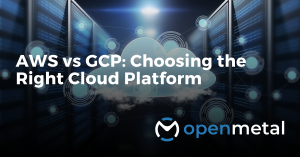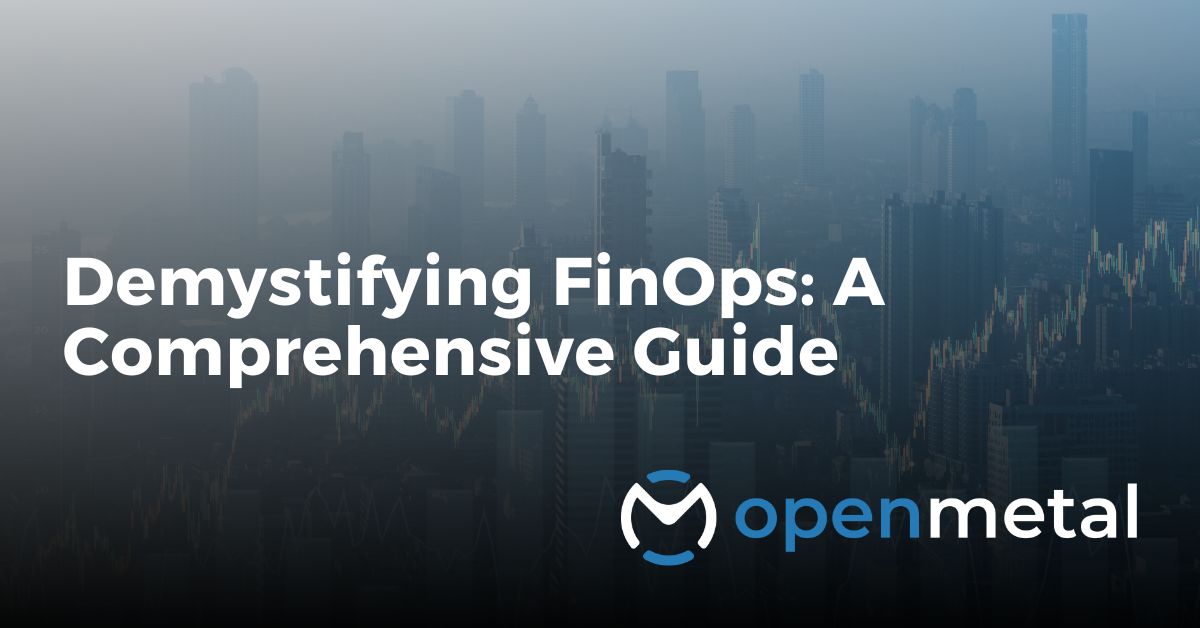We are living in fast paced digital era booming with technological innovations. Organizations can easily tap in and reap the benefits of these technological advancements but it can be costly. The ease of use and access is a slippery slope of over consuming and over spending on resources for convenience rather than out of necessity and this can significantly hurt the bottom line of many organizations. This is where FinOps (Financial Operations) comes in and takes on the task of managing cloud costs effectively.
FinOps combines both financial and technical accountability. At its core, FinOps is a cultural shift that encourages collaboration between teams to achieve cost-effectiveness in the cloud. Your cloud costs often start out pretty straight forward but as your workloads grow and when you consider variable costs, you cloud environment can become rather intricate. FinOps serves as the guide, to help organizations navigate the financial intricacies of their cloud usage.
FinOps usually includes tools or strategies that help organizations maximize their return on investment by optimizing cloud costs and reducing cloud waste. It is more than shopping for the right price and then getting surprised by variable bandwidth costs, FinOps requires proactive management of variable cloud costs. FinOps is a cultural shift which fosters a collaborative culture within an organization. It requires all teams responsible for decision-making on cloud resources and optimizing the spend with carefully monitoring and reporting.
What Are The Key Components Of FinOps?
Visibility and Transparency: FinOps emphasizes the importance of transparency of cloud expenses with real-time insights and detailed breakdown of costs. This detailed real time expense report should allow teams to easily understand the financial landscape of their cloud usage. This is necessary for teams to be able to make informed decisions that align their cloud usage with budgetary considerations.
Accountability and Responsibility: With FinOps, there’s no more passing the blame between finance and engineering over who is responsible for excessive cloud spend. With an effective FinOps strategy all parties that have the power to affect the organization’s cloud spend understand the costs attached to that spend and are then able to make an informed decision on if it fits within their budget or if the projected ROI is worth the cloud spend. Every team member is a steward of financial prudence, actively contributing to a mission of enhancing cost efficiency without compromising on performance. Similarly, procurement software plays a crucial role by centralizing and streamlining purchasing decisions, ensuring transparency and accountability, and enabling teams to monitor and manage expenses effectively. For organizations seeking more advanced capability, tools like Pigment software for financial planning offer integrated business planning to link budgeting, forecasting, and analytics with FinOps objectives.
Continuous Improvement: FinOps is not just an annual product for when you are forecasting your budget. FinOp recognizes the dynamic nature of cloud environments and the ever-evolving needs of an organization. An effect FinOps strategy will require regular reviews, feedback loops, and adjustment to ensure that your organization’s cloud costs remains optimized.
What Is The Difference Between DevOps and FinOps?
DevOps and FinOps are both methodologies that improve organizational processes, but each is focused on distinct aspects of IT and business domains. DevOps is short for Development and Operation and has the goal of streamlining and automating the software delivery lifecycle to facilitate a faster time to delivery. FinOps or Financial Operations is designed to help organization make informed decisions about resource allocation to minimize cloud waste and optimize cloud cost ROI.
DevOps
- Requires collaboration between software development and IT operations teams.
- Brings about process improvements and uses automation tools to reduce silos between development and operations teams. Leads to continuous integration and continuous delivery (CI/CD) and faster deployment cycles.
- Benefits: Reduces time to market and increases the reliability of software delivery.
FinOps
- Requires collaboration between finance, operations, and technical teams.
- Focuses on real time visibility, accountability and continuous optimization of managing cloud expenditures.
- Benefits: Helps organizations make decisions about resource allocations, regulate cloud spend to avoid exceeding budgetary constraints, and promotes a culture of fiscal responsibility across departments within the organization.
What Are The Benefits of Implementing FinOps?
- Cost Optimization: FinOps help organizations identify and capitalize on cost-saving opportunities. Real-time visibility on cloud expenses allows organizations to identify under-utilized resources that can be reallocated, eliminate redundancies, and optimize their resource allocation strategies. This allows organizations to align their cloud spend with their resource need/usage to avoid cloud waste.
- Increased Efficiency: FinOps fosters collaboration between finance, operations, and development teams, which streamlines processes and leads to operational efficiencies. Silos are broken down and teams work together towards the common goal of managing and optimizing cloud costs.
- Informed Decision-Making: Real-time visibility into cloud costs enables prompt and informed decision making. Teams can adjust their strategies based on actual usage patterns and not be surprised by runaway bills caused by variable cloud expenses such as bandwidth. The level of cloud monitoring and transparency maintained in FinOps practices ensures that decisions are rooted in a deep understanding of the financial implications and lead to better resource utilizations.
- Scalability and Innovation: Carefully monitoring resource consumption allows decision makers to identify where there are idle resources that can be scaled back and where there are workloads too large to operate optimally within the constraints of their resource allocation that may benefit from additional resources that can be reclaimed from other wasteful workloads. Additionally, most organizations have a set budget for cloud related expenses set at the beginning of the year. FinOps maximizes the purchasing power of this budget. When effective cost saving strategies are implemented, there are freed-up funds that can be used to increase the organization’s profitability or to purchase additional infrastructure resources necessary for innovation.
How Does FinOps Align With Other IT and Business Initiatives?
It’s important to note that while FinOps is guided by the overall goal to manage and reduce cloud cost, an effective FinOps strategy will not compromise on performance to achieve savings.
FinOps creates accountability by assigning costs to specific projects or departments, which allows for teams to identify how their efforts align with the broader business initiatives. Projects and teams are no longer working in silos; each project will be aware of their cloud costs and the ROI attached to those expenses. This will allow organizations to implement policies and enforce cloud expense related guidelines so they can adapt efficiently to cloud technologies while staying aligned with business initiatives to be competitive in the digital landscape while maximizing profitability.
How Do I Optimize Cloud Resource Usage For Cost Efficiency?
Understand Your Cloud Bill
The first step to controlling your bill is understanding what your high cost areas are. If you purchased resources for a workload that has significantly grown, you may have fallen in the trap of looking at the cost in parts. Now that you are looking at the bill for all of those instances combined, you’re realizing that it would be significantly more cost effective to move this workload over to a hosted private cloud. Or you may spot inconsistencies and identify idle or wasted resources.
Additionally, for the finance team who are not as intimately acquainted with the fluctuating resource requirements of the IT team, this will allow you to identify trends and patterns over years to be able to predict, within a reasonable margin of error, how many resources you need to budget for.
Identify Wasted Resources (Idle and Unutilized)
Sometimes temporary servers are provisioned but developers or administrators forget to deprovision them after the task is complete. Or they forgot to remove the attached storage. Temporary resources are typically provisioned at on-demand rates, which are elevated, and these charges persist until the resources are deprovisioned. Additionally, some of your instances may be larger than necessary with the anticipation of spikes. It helps to control your infrastructure cost by merging those workloads and then auto-scaling when you have a spike.
Set Budgets
It can be easier to control your bill by setting budgets versus finding ways to cut costs after getting blindsided by runaway bills. It is important for engineering leaders and other executives to come together and set a budget based on project requirements and available financial resources that can be invested into a project. Most providers have a budget system in place, some are more complicated than others to navigate.
With OpenMetal, you pay for the block of resources so leaving your cloud idle won’t affect your bill but there are some variable factors that may alter your bill like egress usage, scaling up, etc. Administrators can set budgets within the dashboard which will prevent users or even auto-scaling from provisioning resources that will go above your budget, but administrators can easily adjust budgets at any time.
Right-Size Your Resources and Auto Scale When Needed
As mentioned in section two, it’s not uncommon to have resources that need to change size to accommodate spikes. It may be tempting to leave the instances larger to avoid tedious scaling up and down but there are right-size services that can help you automate the process of scaling your instances up and down and help you avoid paying for idle resources.
Save With Reserved and Spot Instances
On-demand instances are flexible and highly available, but they come with a significant premium that can easily inflate your infrastructure bill. Reserved and spot instances provide you with instances at significantly lower prices. For example, If you had 68 E2 Medium with 9,000 GiB of Egree and 40 GiB zonal SSD in a Virginia data center from GCP, the monthly on demand cost to your organization would be $3,147 per month. You can save 33% and reduce your monthly bill to $2,117 by switching to a 3 year termed contract with GCP. However, with the same workload, you can have a 69% expense reduction if you switch from monthly on-demand billing to a 3 year termed contract with a hosted private cloud from OpenMetal.
It may be difficult to plan your need for unpredictable workloads well in advance for reserved instances, and spot instances run the risk of disruption that may be too much of a hassle for the savings. However, some cloud providers like OpenMetal extend fair advance notice to users of spot instances. This makes these instances a practical choice for temporary and unpredictable workloads. If the instance need persists, transitioning to a reserved instance is a seamless option.
Monitor Your Cloud Usage (Cloud Monitoring Tools)
Monitoring cloud usage with cloud monitoring tools can help your businesses optimize your operational costs and ensure efficient resource utilization. Cloud monitoring tools provide real-time insights into various aspects of cloud performance, such as server load, network traffic, and storage usage. By analyzing these metrics, businesses can identify potential bottlenecks, forecast capacity needs, and pinpoint opportunities for optimization. Additionally, cloud monitoring tools facilitate the detection of any abnormal activities or security threats, enhancing overall system integrity.
Through proactive monitoring, businesses can make informed decisions, adjust resource allocations, and address issues promptly, contributing to a streamlined and cost-effective cloud infrastructure. Monitoring tools also work with your right-sizing tools to help accurately predict needs before they arrive. Most providers have a dashboard in which you can monitor your cloud usage; OpenMetal uses Datadog which allows users to oversee all layers of their deployments.
Multi-Cloud Solutions
Cloud prices vary based on instance type, size, and vendor. The vendor you choose for each workload will vary based on the instance type you need and the size of your workload.
 For small workloads, it’s best to use public cloud instances unless there’s an anticipation that this workload will dramatically increase within three months to the point of needing over 50 instances. For larger workloads it would be cost effective to use a hosted private cloud.
For small workloads, it’s best to use public cloud instances unless there’s an anticipation that this workload will dramatically increase within three months to the point of needing over 50 instances. For larger workloads it would be cost effective to use a hosted private cloud.
The chart on the left compares the resources you can purchase with a budget of $20,000 between a public cloud provider like GCP and a hosted private cloud provider like OpenMetal. With a hosted private cloud, you have significantly more computing resources within the same budget.
Now, if you have a variety of small workloads, you can also run them on different instances on the same cloud. A cost effective multi-cloud strategy will choose the best public instances for your workloads comparing both pricing and performance. But additionally, it will identify when your cloud spend and resource needs are high enough that it makes sense to move workloads from public cloud to hosted private cloud.
Use Appropriate Storage Solutions
As with your instances, storage also comes at a price. It’s important to ensure that your storage clusters are adequately sized. In addition to storage size your provider may offer a variety of storage classes, tailored to the frequency of data access. This helps create a balance between performance and cost-effectiveness.
Businesses can also control the cost of their cloud storage by implementing lifecycle policies, leveraging compression and deduplication techniques, and utilizing cloud-native database services with built-in optimization features contributing to efficient storage management.
Users can also save on egress by collocating their storage with their cloud when using cloud providers like OpenMetal.
Limit Data Transfer Fees
One of those variable factors in your cloud bill that cannot be fixed is egress. Egress cost also varies across providers. If you are in an industry such as media and entertainment, e-commerce, research and academia, gaming, etc., where egress can be a significant part of your cloud usage, choosing a provider with lower egress costs is imperative.
Additionally, businesses can implement several practical strategies to reduce data transfer costs. Businesses can use Content Delivery Networks (CDNs) and enhance their website and application performance by compressing and caching to lighten data loads. Employing techniques such as data compression and deduplication, along with prioritizing essential data transfers, helps allocate resources wisely.
Identify and Minimize Software License Costs
Recognizing and mitigating software license costs helps in fine-tuning cloud expenditure for businesses. Many cloud services charge based on the number of software licenses utilized. Therefore, it is important for organizations to conduct a meticulous inventory of their software assets. By identifying redundant or underutilized licenses, businesses can eliminate unnecessary expenses.
Additionally, opting for open source alternatives or negotiating flexible licensing agreements with vendors can contribute to substantial savings. Thoughtful handling of software licenses not only helps control costs but also ensures that resources are used wisely. This allows businesses to manage their finances effectively while navigating the complexities of the cloud landscape.
More on the OpenMetal Blog…

AWS vs GCP: Choosing The Right Cloud Platform
AWS and GCP are leading players in cloud computing, offering a wide range of services and attractive pricing. However, choosing the right platform requires understanding their strengths, customer pain points, and alternatives. Comparing and shopping around for cloud products can be…Read More

Private Clouds in FinOps: Strategic Insights
Incorporating private clouds into your organization’s FinOps strategy offers numerous strategic advantages, particularly in terms of cost optimization and resource management. In addition to cost control and visibility that the private cloud, fixed cost model provides, private clouds offer flexibility in …Read More

Public Cloud Waste at 28%: Time to Consider On-Demand Private Cloud as an Alternative
As businesses realize the growing costs of cloud, it becomes even more important to find alternative solutions.
This article presents the known benefits of private cloud, the factors that make organizations hesitant about the move, on-demand private cloud… Read More
Test Drive
For eligible organizations, individuals, and Open Source Partners, Private Cloud Cores are free to trial. Apply today to qualify.
Subscribe
Join our community! Subscribe to our newsletter to get the latest company news, product releases, updates from partners, and more.



































